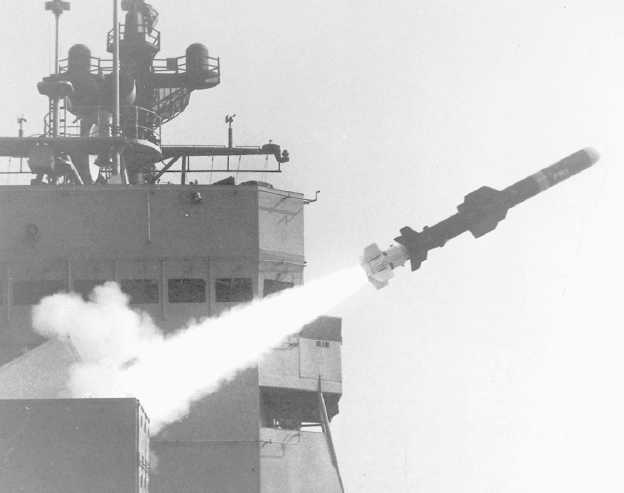HARPOON ANTISHIP CRUISE
MISSILE
Figure 1-8 shows the HARPOON ANTISHIP
CRUISE MISSILE, a medium-range, rocket-
boosted, turbo-sustained cruise missile. It can be
launched from surface ships, submarines, or
aircraft (without the booster). It is effective
against hostile surface targets such as combatants
and surfaced submarines.
The Harpoon missile uses a solid-propellant to
launch it from a variety of surface ship launcher
configurations
including
Tartar
rails,
antisubmarine rocket (ASROC) cells, or deck-
mounted
canisters.
When
launched
from
submerged submarines, a sealed capsule protects
the Harpoon missile in the torpedo tube. The
capsule then floats to the surface, where booster
ignition occurs and the missile boosts from the
capsule. Following a surface or an air launch, the
Harpoon flies a programmed, low-trajectory path
to the target. An onboard computer provides
inflight
attitude
reference
and
midcourse
guidance. Target location is provided by a self-
contained active radar seeker. Terminal guidance
uses the radar seeker, or passive homing, in an
electronic countermeasure (ECM) environment. A
500-pound high-explosive (HE) warhead with a
contact fuse accomplishes target destruction.
PHALANX CLOSE-IN WEAPONS
SYSTEM
Figure 1-9 shows the PHALANX CLOSE-IN
WEAPONS SYSTEM. The Phalanx is the Navy’s
Figure 1-8.—RGM-84A Harpoon antiship missile.
1-16


